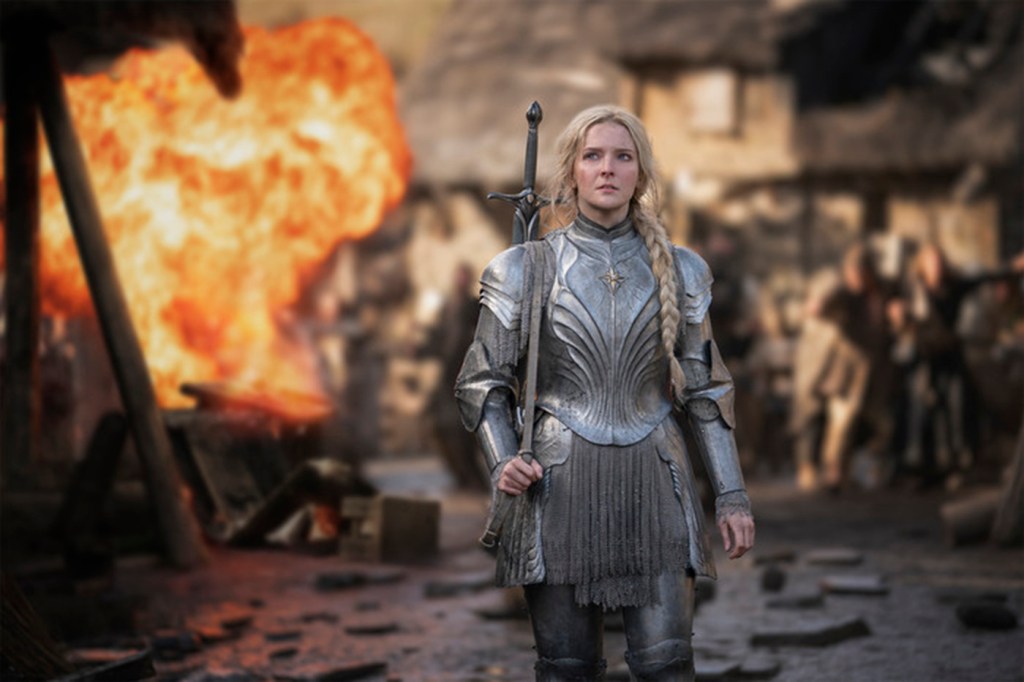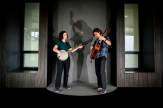The Lord of the Rings is back in 2022. Why can’t people get enough of Middle-earth?

At 12 years old in the early 1960s, Kathleen Coyne Kelly was already an ambitious reader. Her goal: to read every book in the children’s section of her local library in Kenmore, New York. She was well on her way, but when she found J.R.R. Tolkien’s The Hobbit and The Lord of the Rings her journey through the library shelves took a decades-spanning detour into Middle-earth.
On Sept. 2, Tolkien’s world is coming back to the screen in a big way: Amazon’s new TV series The Lord of the Rings: The Rings of Power. Almost 60 years after she first read the books, Kelly, a professor of English at Northeastern University, is just as excited to return to Middle-earth and the world of elves, dwarves and hobbits as she was then.
And she isn’t alone. Since the first book in The Lord of the Rings trilogy was published in 1954, the series has gone on to sell 150 million copies and become one of the best-selling books of all time. It spawned an equally famous, Oscar-winning series of films from director Peter Jackson. And Amazon’s series, which takes place thousands of years before The Hobbit and The Lord of the Rings, is already estimated to be the most expensive TV series ever made.
Amazon is banking on The Lord of the Rings in 2022, but what is it that keeps people coming back to Middle-earth?
For Kelly, who specializes in medieval literature and teaches a fantasy literature course, the answer lies in Tolkien’s original worldbuilding.
“When I re-read [those books] I know what’s going to happen, but I still can sink into that world,” Kelly says. “Tolkien, more than Lewis, created such a big world. Tolkien never said he was making this stuff up. He felt that he was remembering, he was telling stories that were already circulating somewhere.”

According to Kelly, part of the reason Tolkien’s series has become so timeless is its specific publication history.
Tolkien published The Hobbit in 1937, and it was an instant success––as a children’s book. At the time, there was more of a divide between books for children and adults than there is now. That’s why when the first The Lord of the Rings book, The Fellowship of the Ring, came out in 1954, it was confusing for readers. It “wrecked their idea of genre,” Kelly says.
It also coincided with baby boomers coming of age, so by the time the 1960s rolled around The Hobbit and The Lord of the Rings had become cultural touchstones for an entire generation, according to Kelly.
In 2001, Jackson’s “The Fellowship of the Ring” hit the culture like a troll swinging its oversized club. The films came at a time when “our whole Anglo-American culture had turned to fantasy as a dominant genre,” Kelly says.
But Kelly is quick to point out that the desire for long-form, involved stories is nothing new.
“It’s a saga, it’s a story, and for me, that’s so medieval,” Kelly says. “You have people in the Middle Ages, and what entertainment do they have? … A troubadour is coming by and saying, ‘I have a story for you.’ And they listened to these stories. The troubadour says, ‘Oh, I’m done for the night. You’ll have to come back.’”
“It’s a sustained escape,” Kelly adds. “And now that The Hobbit and The Lord of the Rings exist in three media, our appetites are continually whetted.”
The medieval roots of Tolkien’s world play a significant role in its timeless appeal. Kelly says his writing functioned as “echoes of stories,” constantly referencing archetypes and themes that most Western readers would be aware of.
“The arc of the hero isn’t that different from story to story, but some people do it better than others and Tolkien does,” Kelly says. “Tolkien, steeped as he was in medieval literature and classical literature, perfected those narratives that we all are drawn to about heroes.”
Kelly acknowledges that not every part of Tolkien’s world and worldview has aged well, particularly his depictions of race and women. However, there are elements of The Lord of the Rings that resonate today–potentially even more than they did in Tolkien’s day.
“You can read The Lord of the Rings ecologically,” Kelly says. “To read The Hobbit and read about Hobbiton, it’s a kind of utopia, an Edenic, unspoiled natural place. Then, in Lord of the Rings, it’s such an incredible landscape, so what do the evil villains do? They despoil and degrade the environment.”
At a time when authoritarianism is on the rise, the villainous figure of Sauron, a character clearly inspired by Tolkien’s experiences in World War I and a war-ravaged England during World War II, is also frighteningly relevant.
“It was also easy to identify authoritarianism with Sauron, and to see, especially going back to the 60s, Mordor as the end product of the military industrial complex,” Kelly says. “When it comes to reading anything, books are mirrors.”
But there is another less tangible element that explains the lasting appeal of The Lord of the Rings. More than just the escapist pleasure of Tolkien’s world, Kelly says there is a mythic quality to Middle-earth, similar to its medieval inspirations. Not every question is answered, and even for the characters, there is a pervasive mystery to a world with stories that have been lost to time.
“In Tolkien, it’s all mountains,” Kelly says. “You scale one, you get one story and you say, ‘I might not be able to get to that next mountain, but there’s a story. I know there is.’ That is an incredible hook.”
For media inquiries, please contact media@northeastern.edu.





